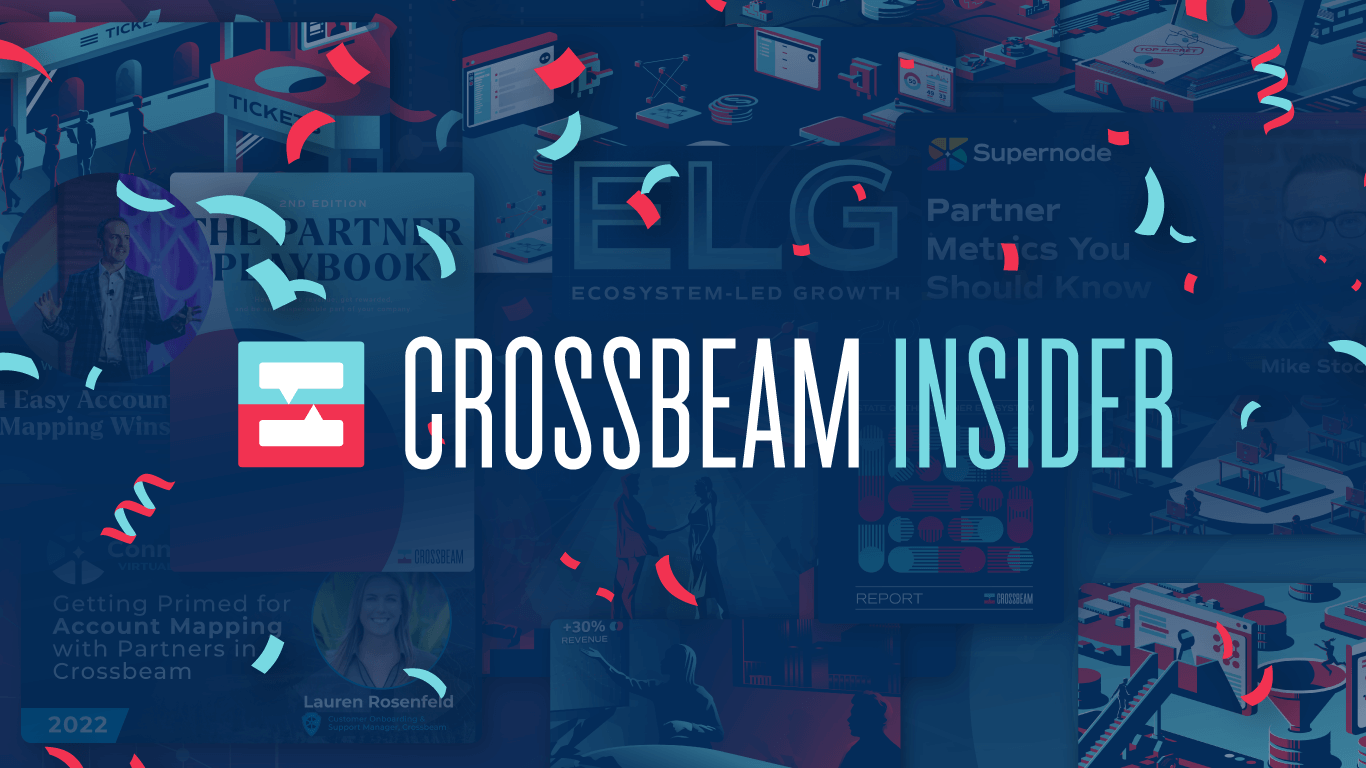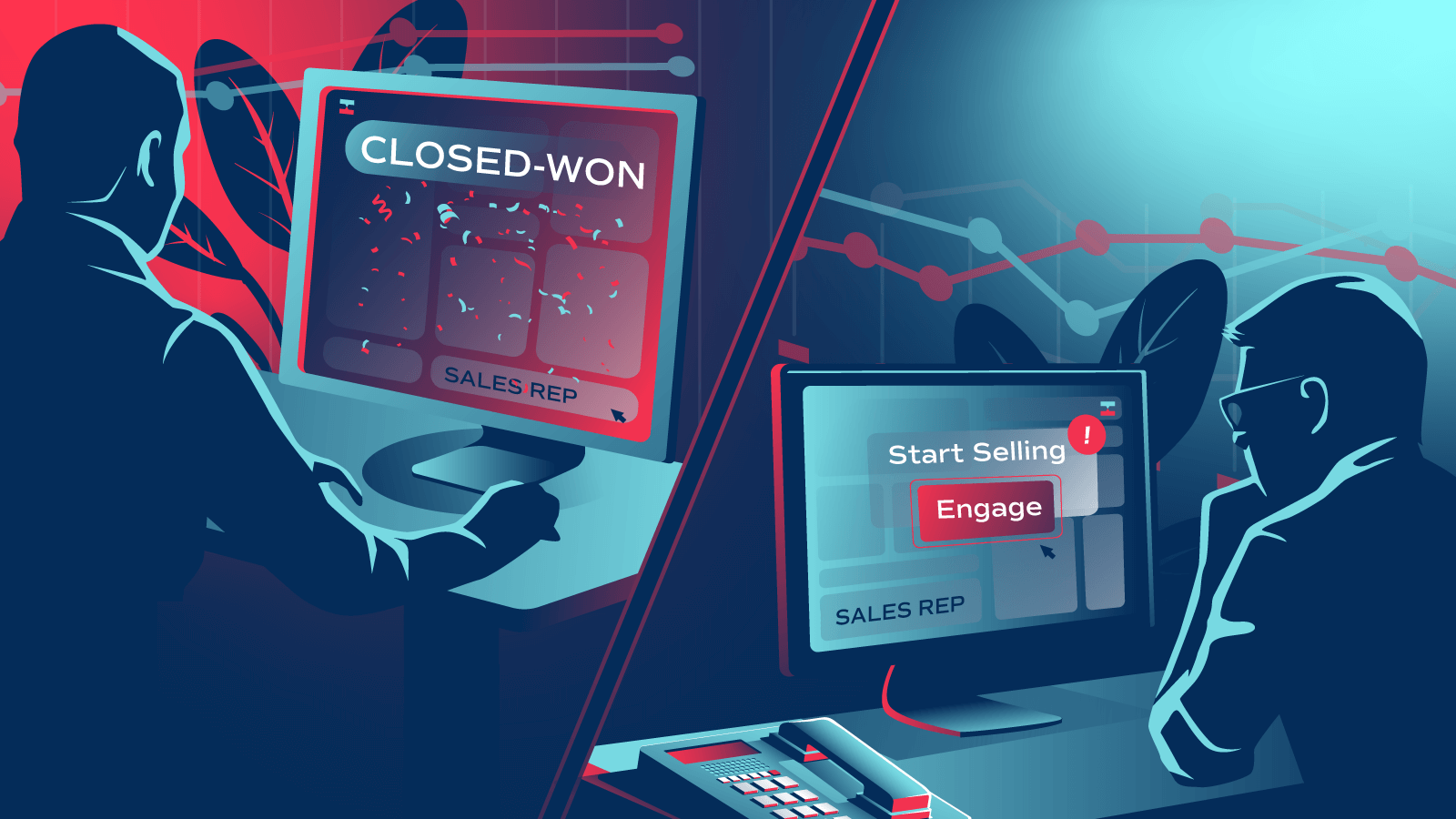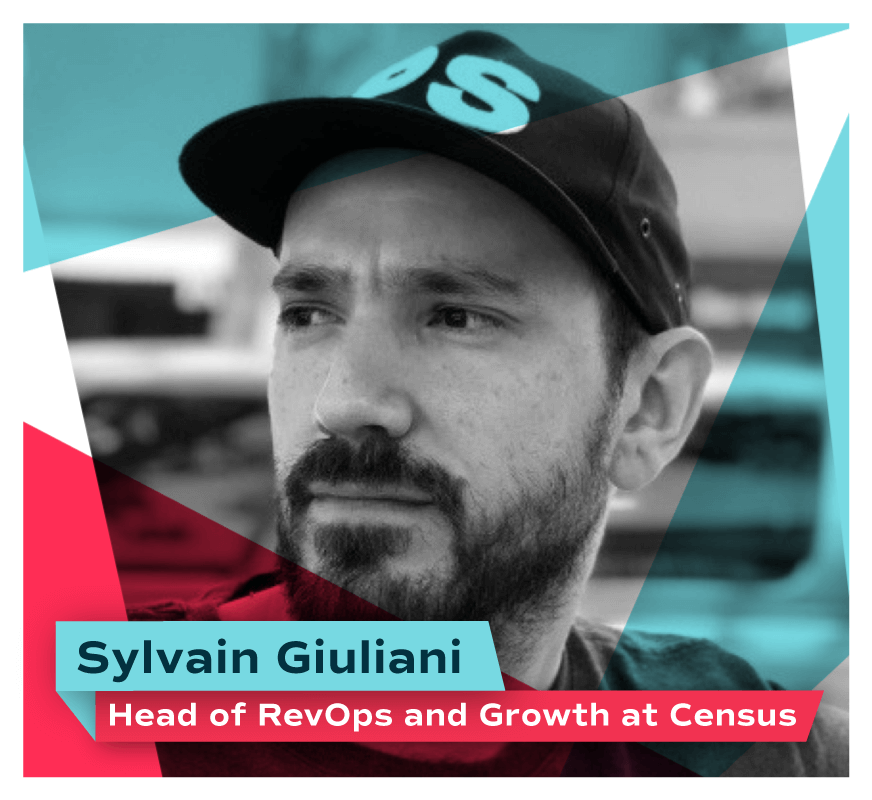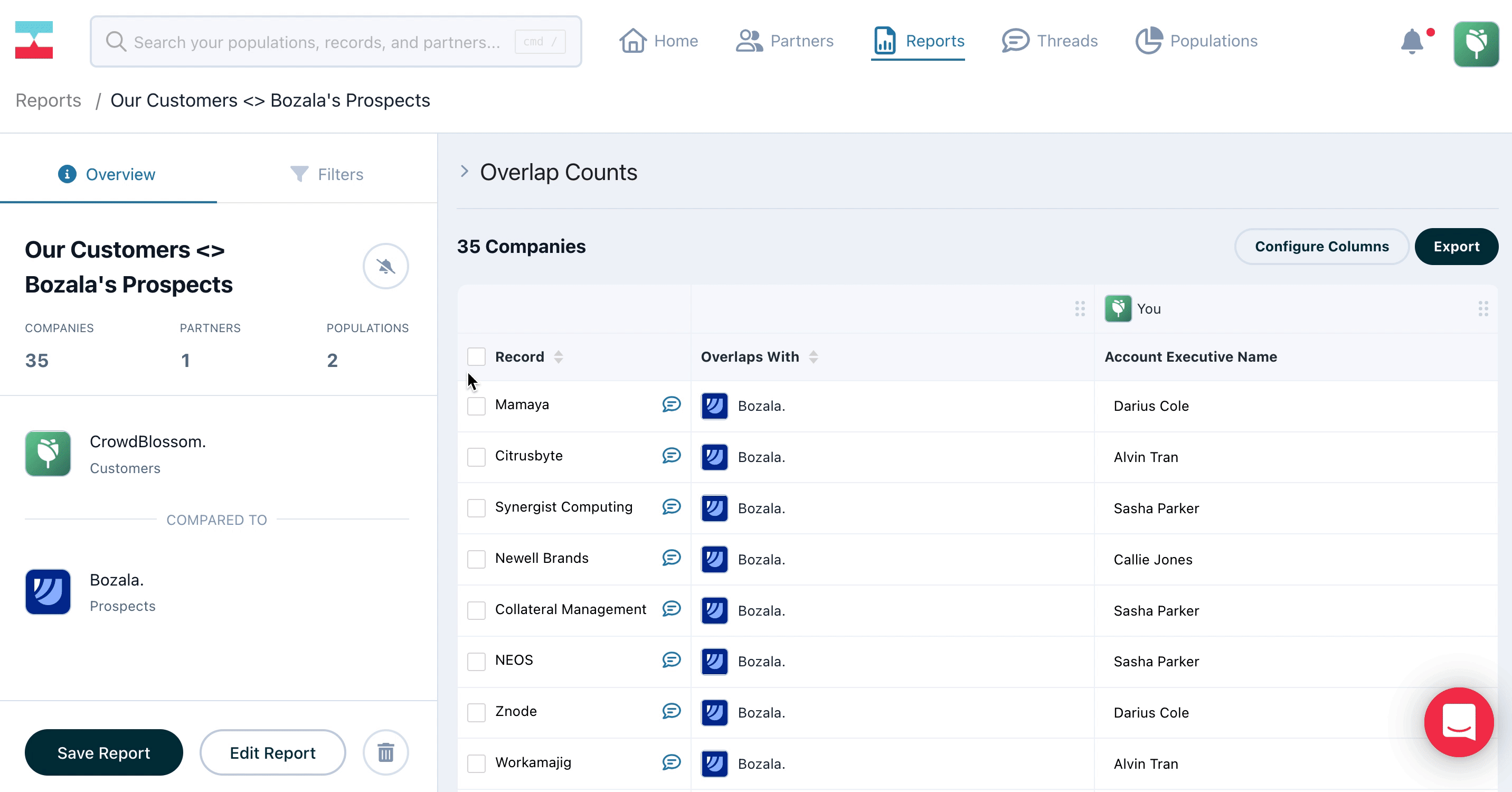Case Study
Partnerships for the Win: How Census Uses Partner Data to Pursue Higher ACVs
Discover how the Census team uses partner data in Crossbeam to drive more partner-influenced deals — and 34% higher annual contract values.

2021
Technology and solution partner programs
100
2-5 people
- Accelerating deal cycles using partner influence
- Driving partner-sourced leads
- Improving outbound outreach
Your team should walk into every pricing discussion with confidence — not sweaty palms and uncertainty.
Just ask Sylvain Giuliani, Head of Growth and Operations at Census, a reverse ETL platform. He uses Crossbeam to surface sales intel (aka second-party data) from Census’ tech partners to help move deals forward and generate partner-influenced revenue.
Previously, the Census team relied on third-party data platforms and social media to scrounge up whatever information they could on accounts: Who had mutual connections to stakeholders at target accounts? Who knew the ins and outs of an account’s procurement process?
“Having sales intel from Crossbeam allows us to be more in control of a deal. This means we can be more confident in our negotiations and pricing discussions with clients. We don’t have to anchor ourselves to a lower contract value,” says Giuliani.
That kind of confidence results in 34% higher annual contract values (ACV) on partner-influenced deals vs non-influenced deals for Census.
“Before Crossbeam, there was nothing. It was a lot of ad hoc backchannel communication and lots of shots in the dark,” says Giuliani.
Today, using Crossbeam, the Census team is working smarter and tapping into reliable second-party data to pursue higher ACVs. Read on to learn how the Census team is:
- Surfacing sales intelligence to accelerate and seal more deals
- Keeping partner-sourced leads flowing
- Driving smarter, more targeted prospecting plays
Surfacing Sales Intelligence to Accelerate and Seal More Deals
“We try to use Crossbeam information to either accelerate a deal or solidify it,” says Giuliani.
For example, when the Census team has a strategic deal in flight, they look up the account in Crossbeam to see if any tech partners have an existing relationship.
“It’s like ‘Ok, cool. This customer is also using these technologies,” says Giuliani. He then contacts those technology partners and their reps to gather information like:
- How does that prospect buy software?
- What was the procurement process like?
- How did you approach pricing negotiations?
- Can you share any information about your experience that might help us navigate this deal?
Giuliani says, “These kinds of conversations give us the intel to avoid hurdles in the sales process. The only people who have that information are the ones who’ve experienced the pain, which are people who have sold products to that organization before.”
Giuliani will share this information with his sales team to keep deals moving or prepare them for any unforeseen “gotchas” that might derail a deal. Perhaps the prospect has a strict data governance policy to be aware of, or maybe there’s a difficult decision-maker they need to win over.
“It’s that type of confidence where we know we’re winning or we’ll know we’re losing very quickly,” says Giuliani. For example, a prospect might share with a partner that they’re not interested in purchasing Census for another six months. That information is just as valuable because then Census’ sales team can adjust their sales forecast and re-prioritize which deals they focus on.
“That’s why Crossbeam is 10x more valuable than a shot in the dark on social media with a first or second-degree connection,” he says.
“That’s why Crossbeam is 10x more valuable than a shot in the dark on social media with a first or second-degree connection.”
Sylvain Giuliani, Head of Growth and Operations at Census
If a partner has strong relationships at a strategic account, Giuliani will ask them to put in a good word for the Census team. The partner might contact the prospect and say “Hey, I heard you’ve been thinking about using Census. We work with them all the time. They are a great tool and we highly recommend them.” A simple message like that is all it takes to push a deal over the finish line.
Keeping Partner-Sourced Leads Flowing
Giuliani keeps his sales team happy by sending them ecosystem qualified leads regularly.
He builds reports in Crossbeam to compare Census’ target accounts against his partners’ customers.
💡 Pro Tip: If partner(s) share data with Census, Giuliani configures his report columns to include fields like: account website, how the partner classifies the account in their CRM (e.g. SMB, mid-market, or enterprise), the partner’s account executive name, and the partner’s account executive email.
Each time a target account for Census becomes a customer of a partner, Giuliani gets an email alert from Crossbeam — and then, it’s go time. “That’s a strong compelling event for us to sell Census,” says Giuliani.
A new overlap is a signal for Census’ sales team to either trigger outbound sequences or for Giuliani to reach out to the tech partner directly.
He might ping the partner manager or the partner’s account executive in a Slack Connect channel saying, “Hey, we just saw that you closed Acme Corporation. What’s the state of the account? Do you think it’s time for us to get into there? Do you know what your customer’s strategy is to get all their data into your platform? Because we’d like to help accelerate that onboarding process.”
The Census team will learn from the partner whether or not the timing is right for Census to engage the account. In some cases, the partner might offer Census’ sales rep a warm introduction into the account through Slack Connect, email, or a LinkedIn message.
Driving Smarter, More Targeted Prospecting Plays
Each month, the Census team will look at their target account list and prioritize those accounts for outbound outreach based on historical partner overlaps in Crossbeam.
“The thing about Crossbeam that’s nice is you can see a prospect’s tech stack. You gain information that you can’t scrape off a prospect’s website, says Giuliani.”
“We know a prospect just bought our tech partner’s product and that’s a very strong signal for us to start the sales process because it involves migrating data and ingesting data in new tools, and that’s really what we do as a business. Those types of events are super relevant from a timing point of view,” he says.
And in sales, timing is everything.
Here’s an example of how Census’ SDR team uses partner data to craft more compelling messaging:
Let’s say Census partners with a tech company called Holver on Crossbeam. Giuliani will run a Crossbeam report to see all of Holver’s customers that overlap with Census’ prospects. He’ll export the report and send it to his SDR team in Slack to review and prioritize their assigned accounts for outbound outreach. Then, his reps will personalize their outbound emails to highlight Census and Holver’s “better together” story, and embed relevant co-marketing materials (think: one-pagers, case studies, or demo videos) to support their messaging.
Here’s an example of an email a Census SDR might send to a prospect named Jane at ACME Corporation. ACME Corporation is a customer of Census’ partner, Holver.
Hey Jane,
Noticed from Linkedin that you lead data engineering for ACME Corporation, and it looks like the product team there is on Holver — I’m reaching out from the Census team, who is a Holver partner.
Are there user and company attributes living in the data warehouse that teams want in Holver to do deeper analysis?
For example, if a ‘power user’ is defined in the warehouse and synced to enrich the user profile in Holver, Product and Marketing can now understand how conversion funnels differ between power and non-power users.
Census is a reverse ETL tool that syncs your data warehouse with Holver and other business applications, without requiring engineering code.
Here’s a short clip on how – would love to hear your thoughts.
Best,
Census’ SDR Name
–
With Crossbeam, Census can now put a process around its partnership motions. Each month, they arm the sales team with everything they need. “[I meet with them and say] ‘This month we’re going after these potential customers. Here’s some great talking points. Here’s the list from Crossbeam. You go and go get them’,” says Giuliani.
Turn your ecosystem into your #1 revenue source
Get started in under a minute. Instantly capture insights from your partners. Identify more opportunities. Did we mention it’s free?











